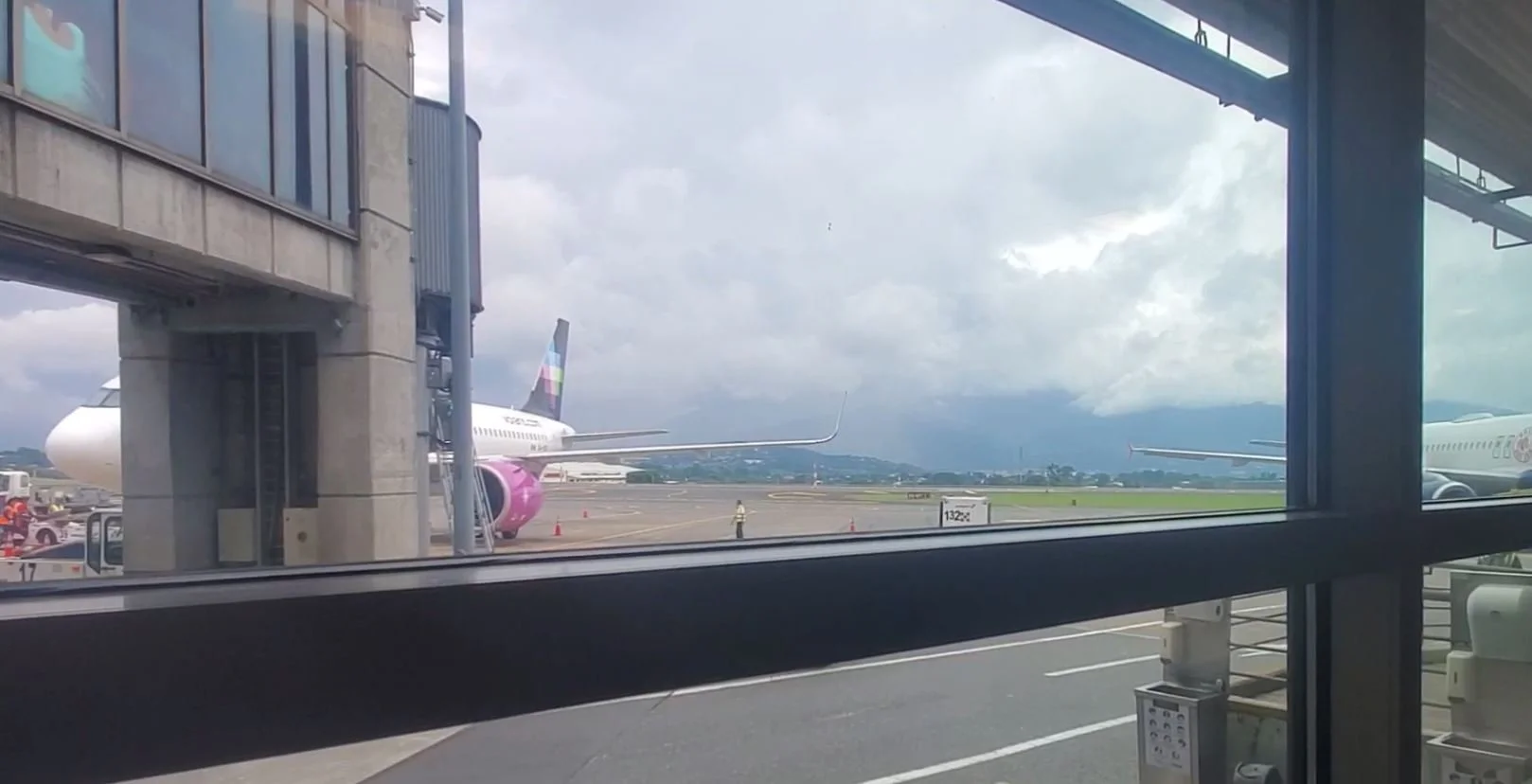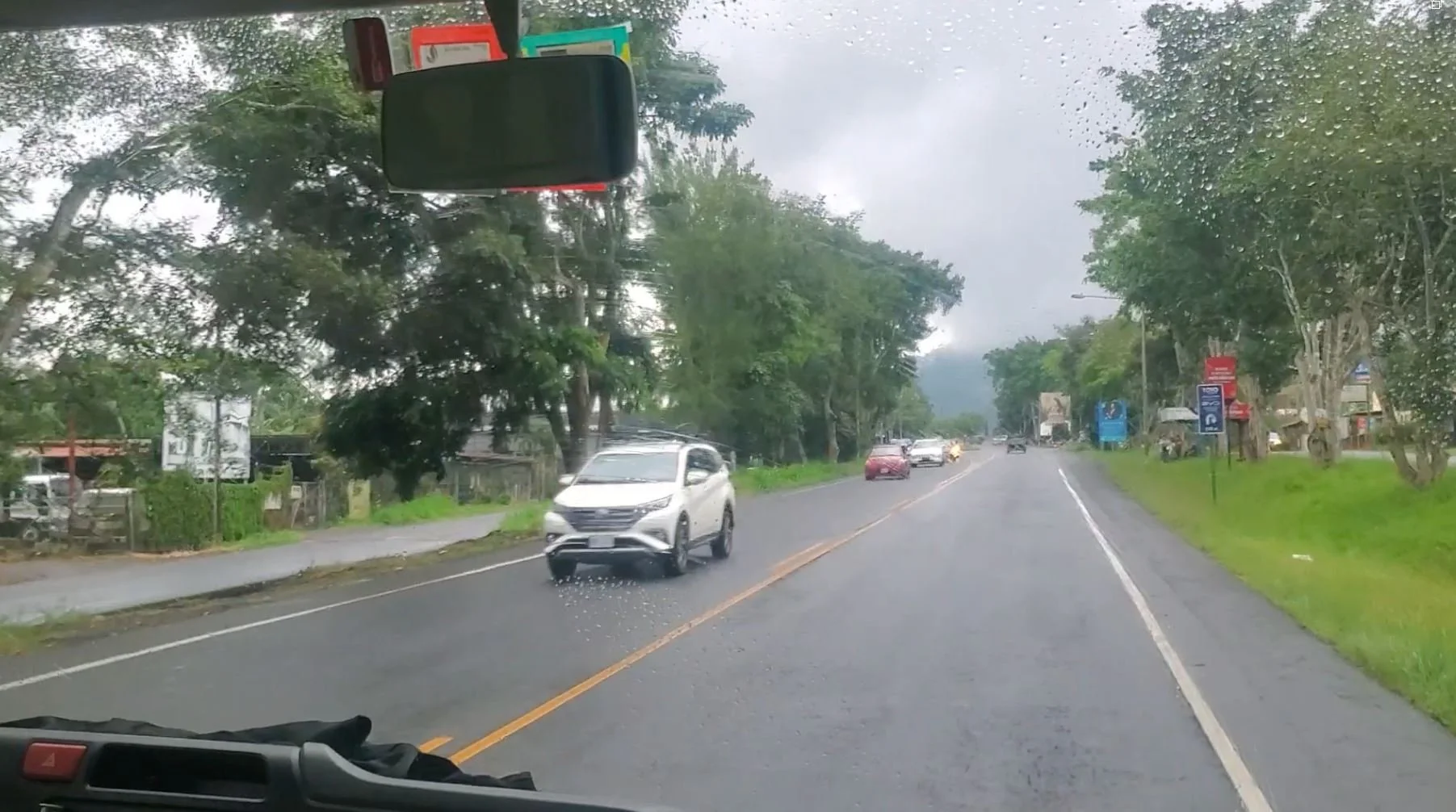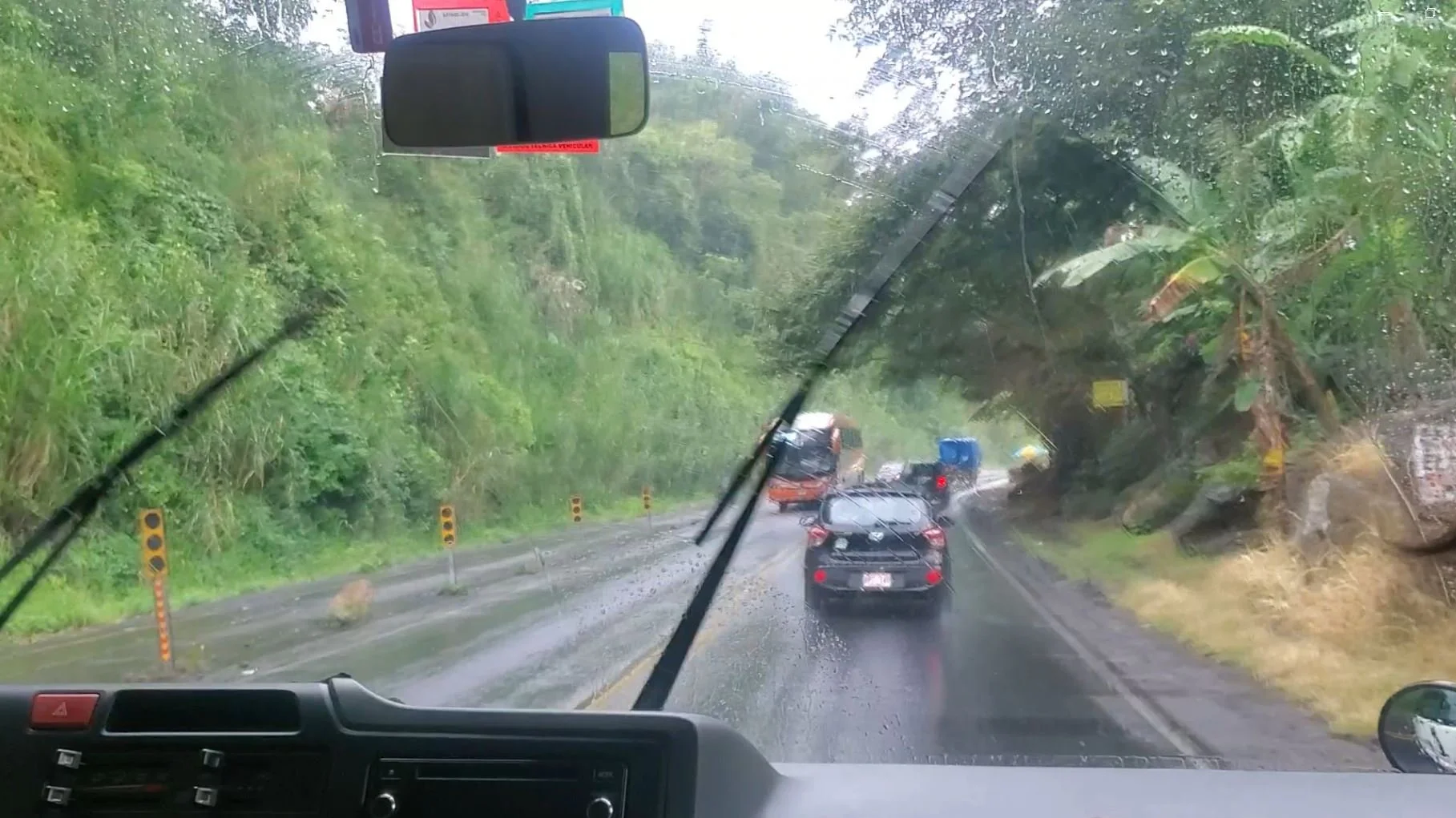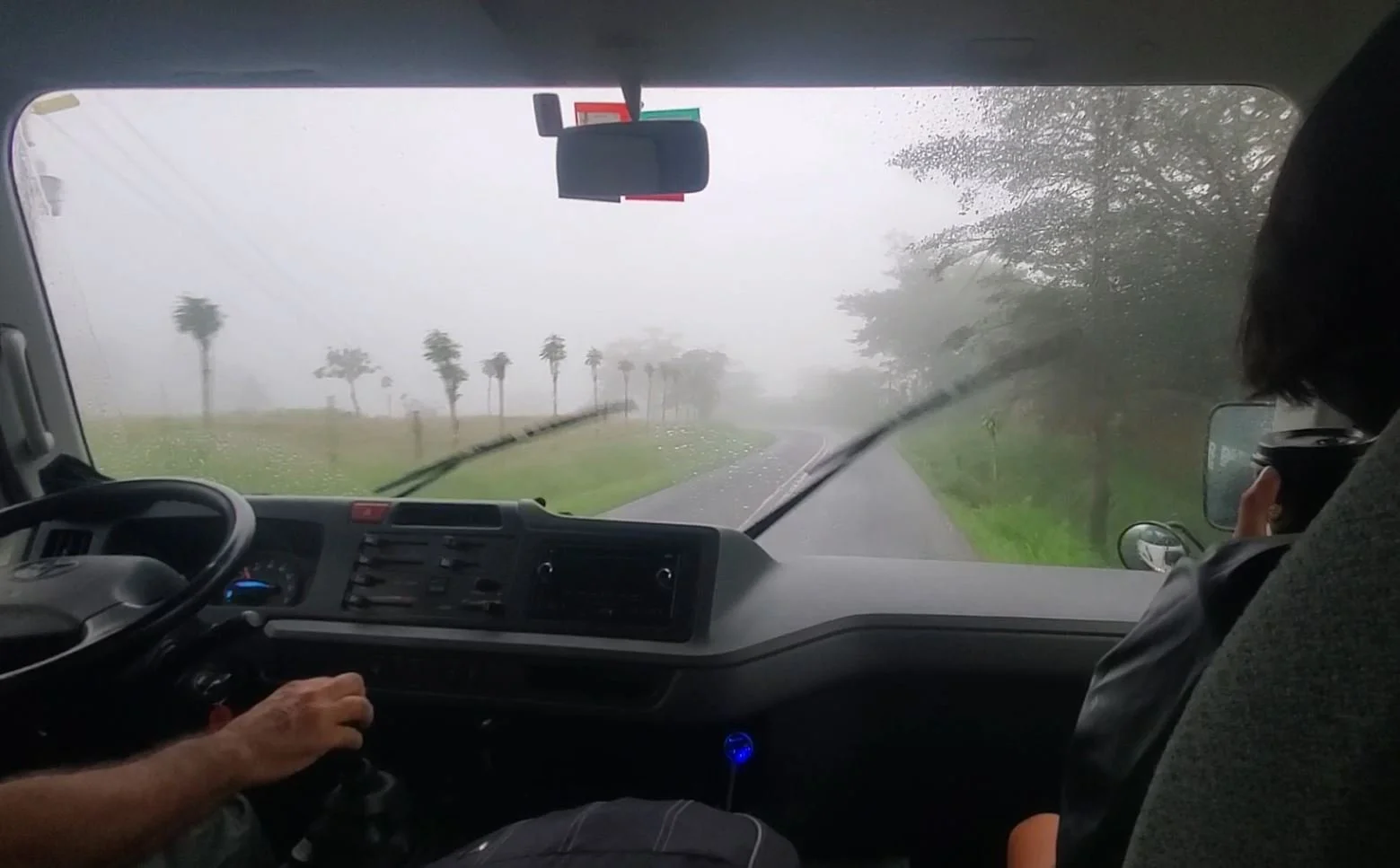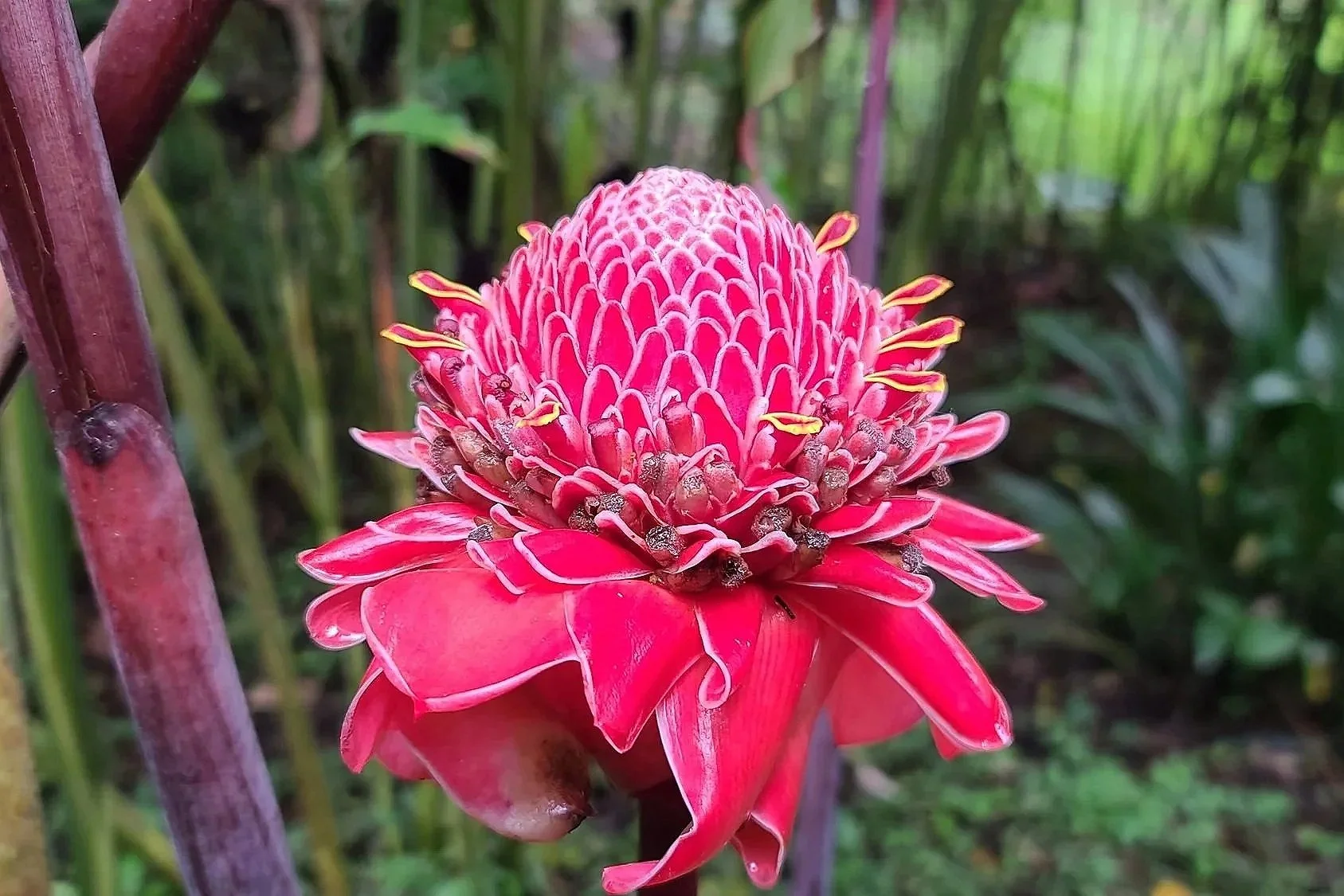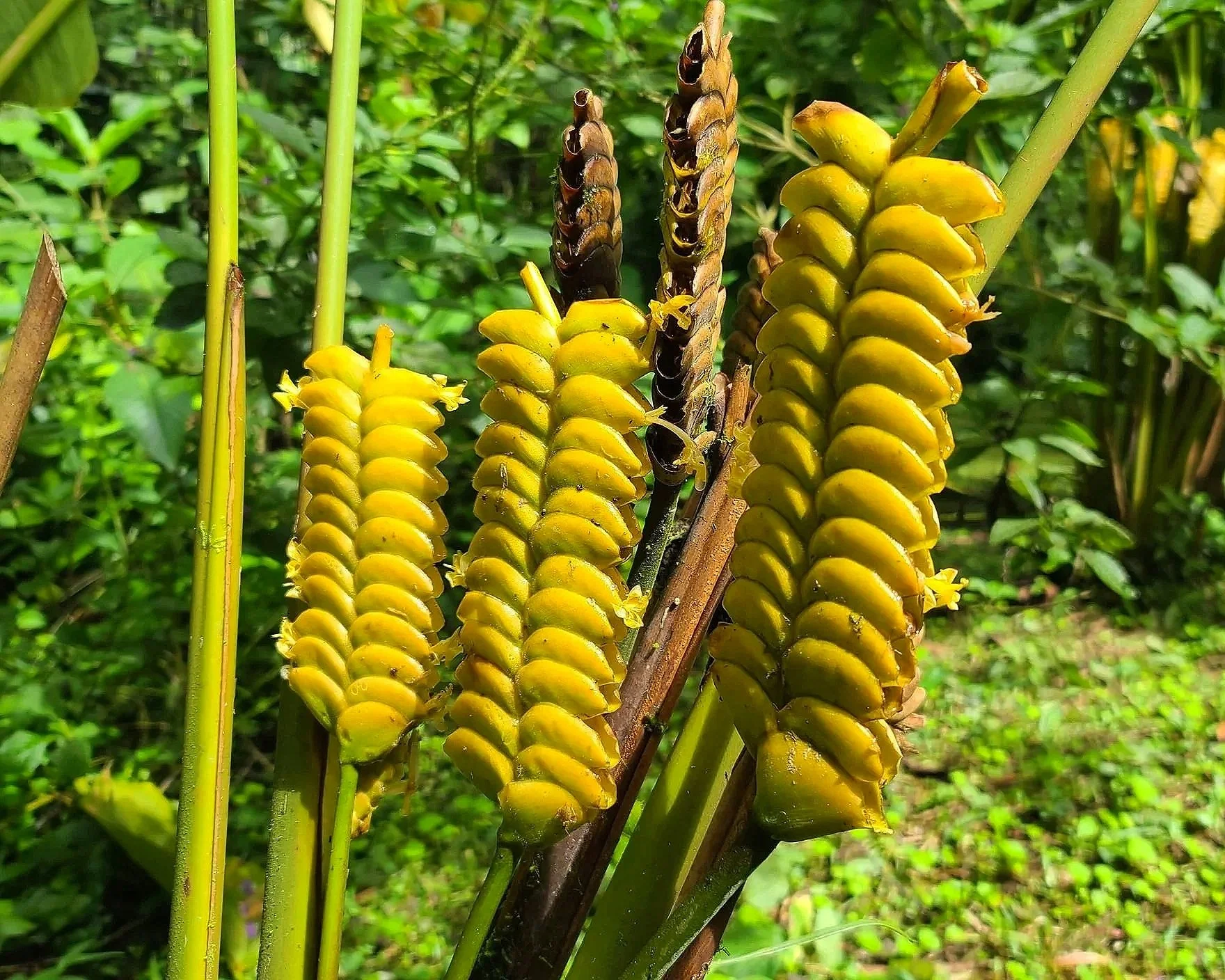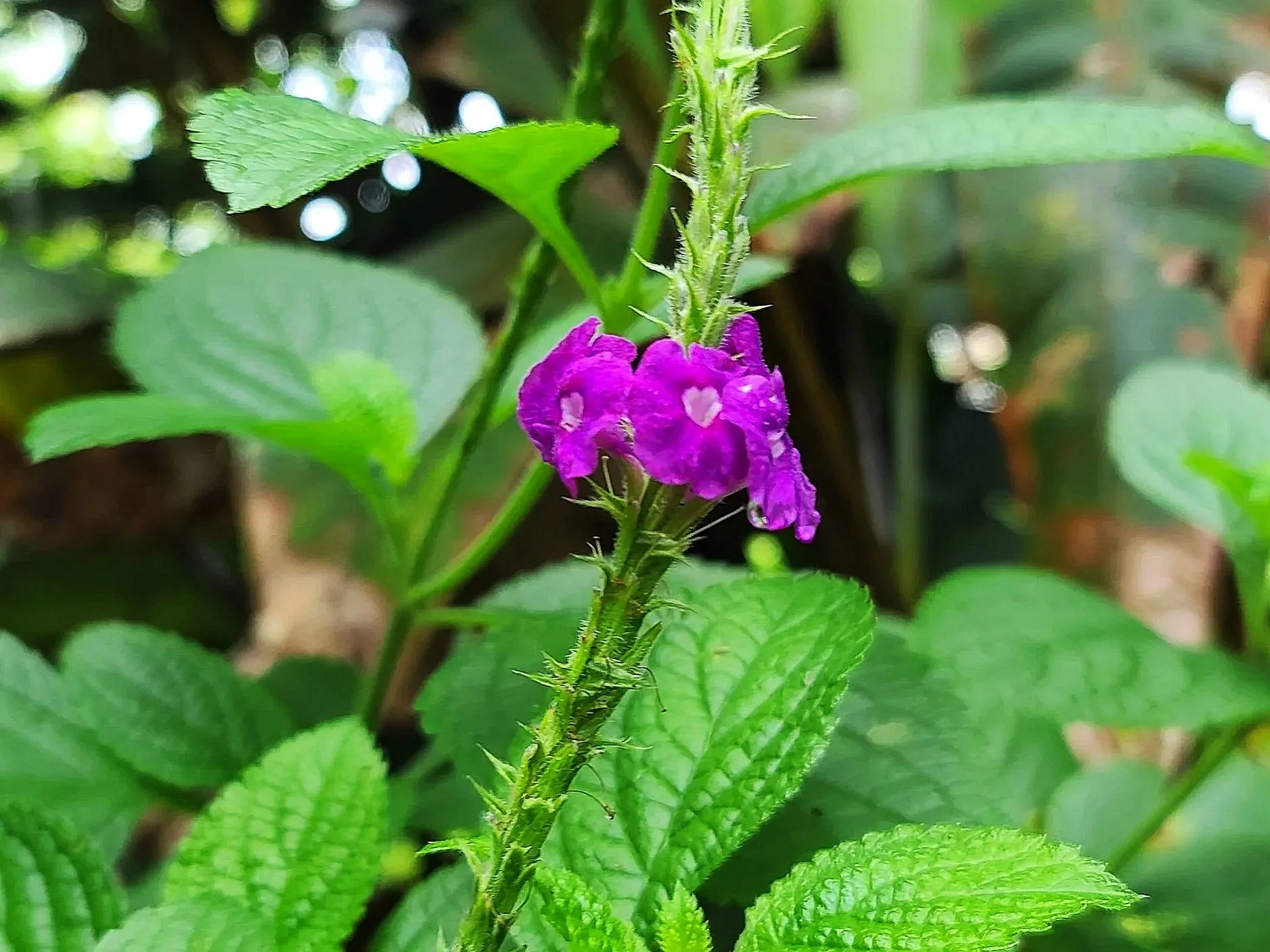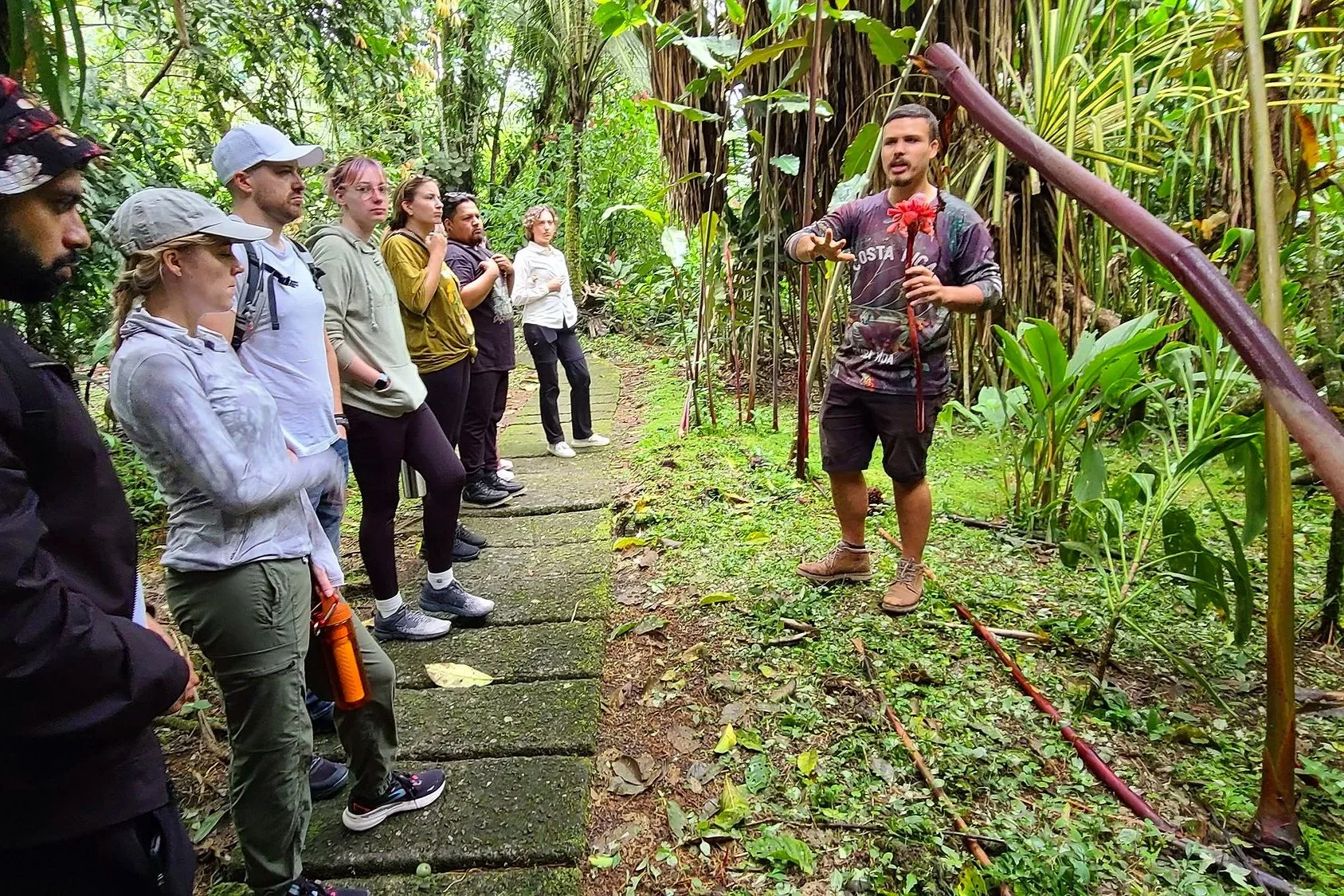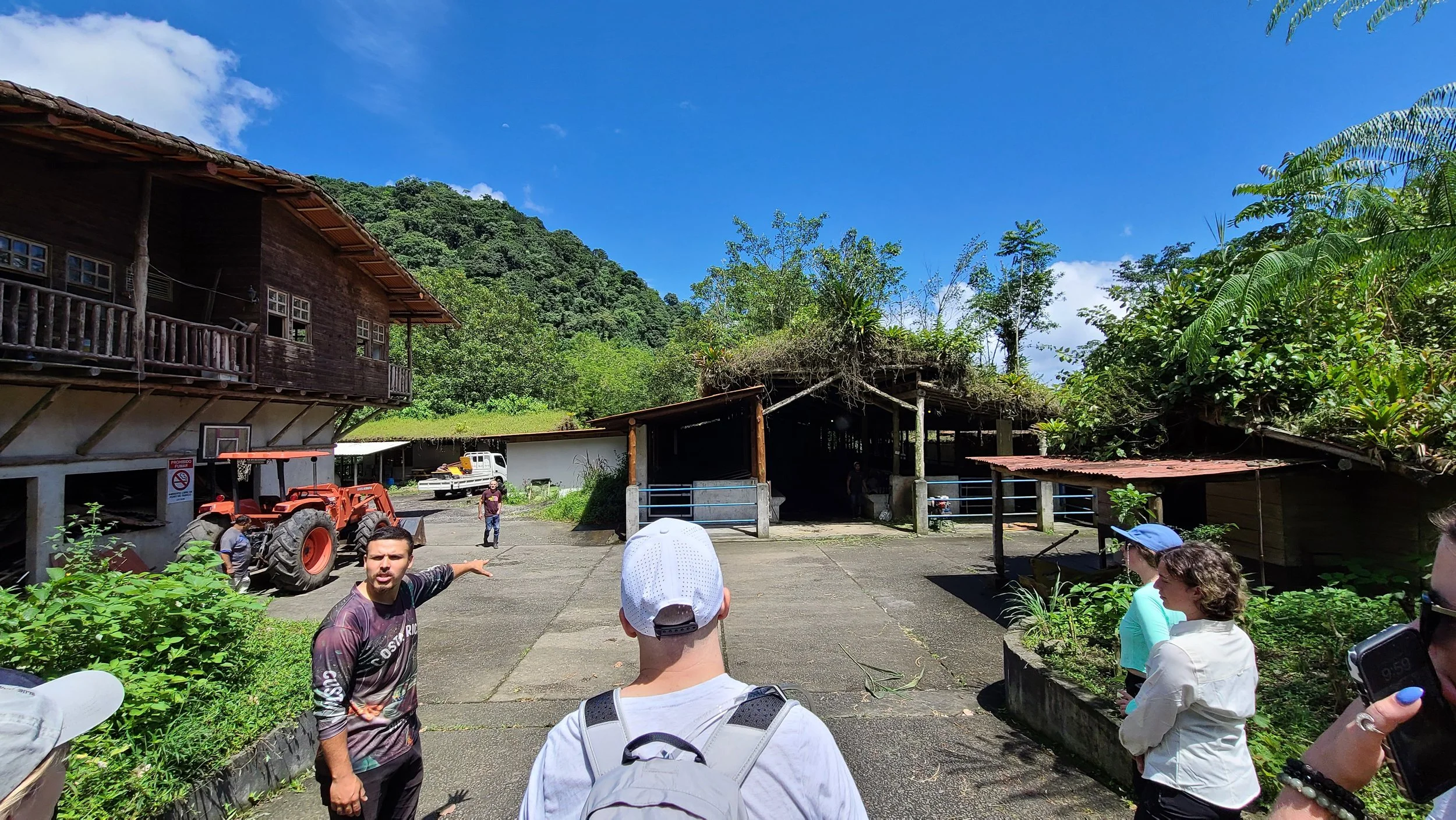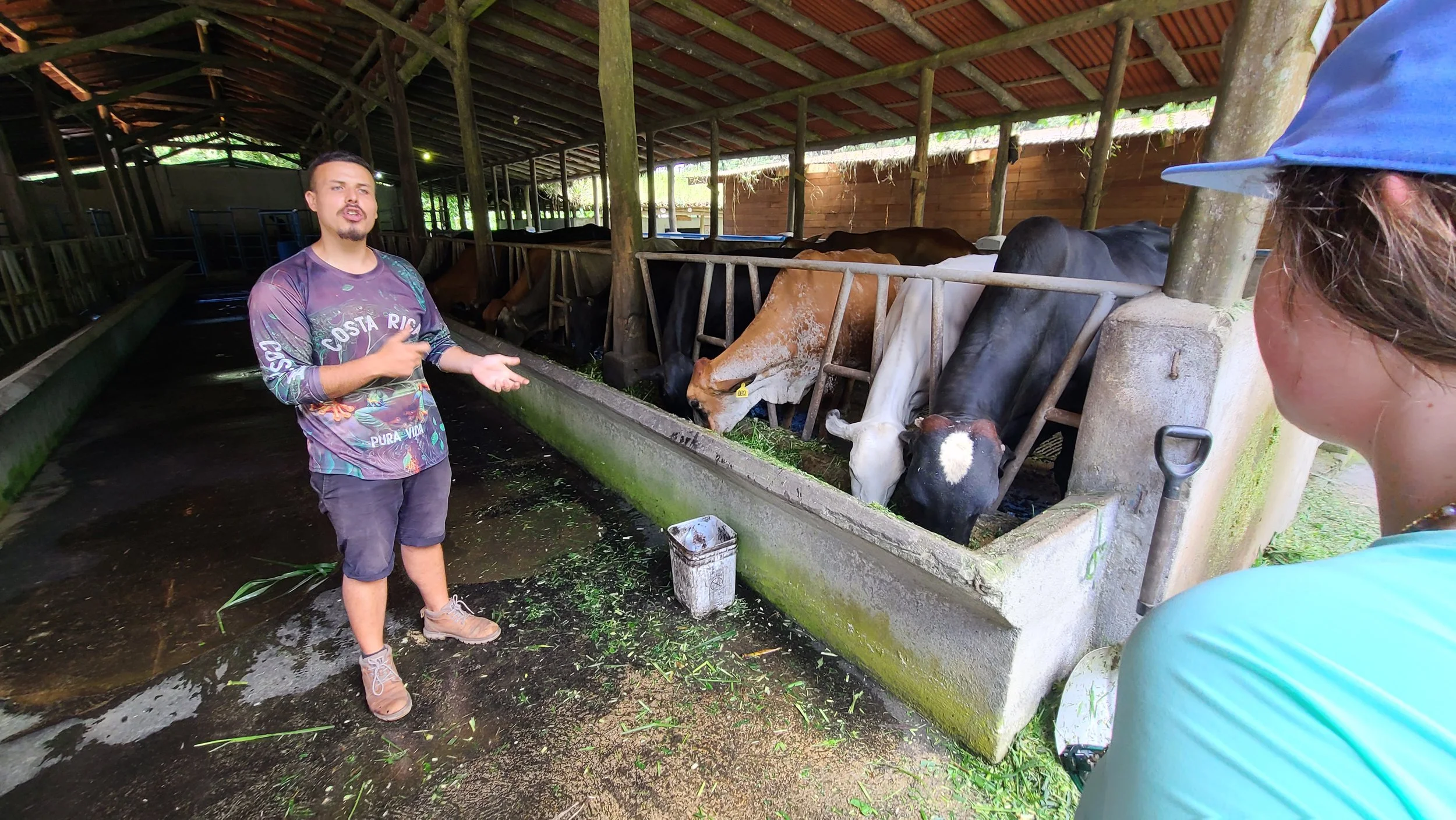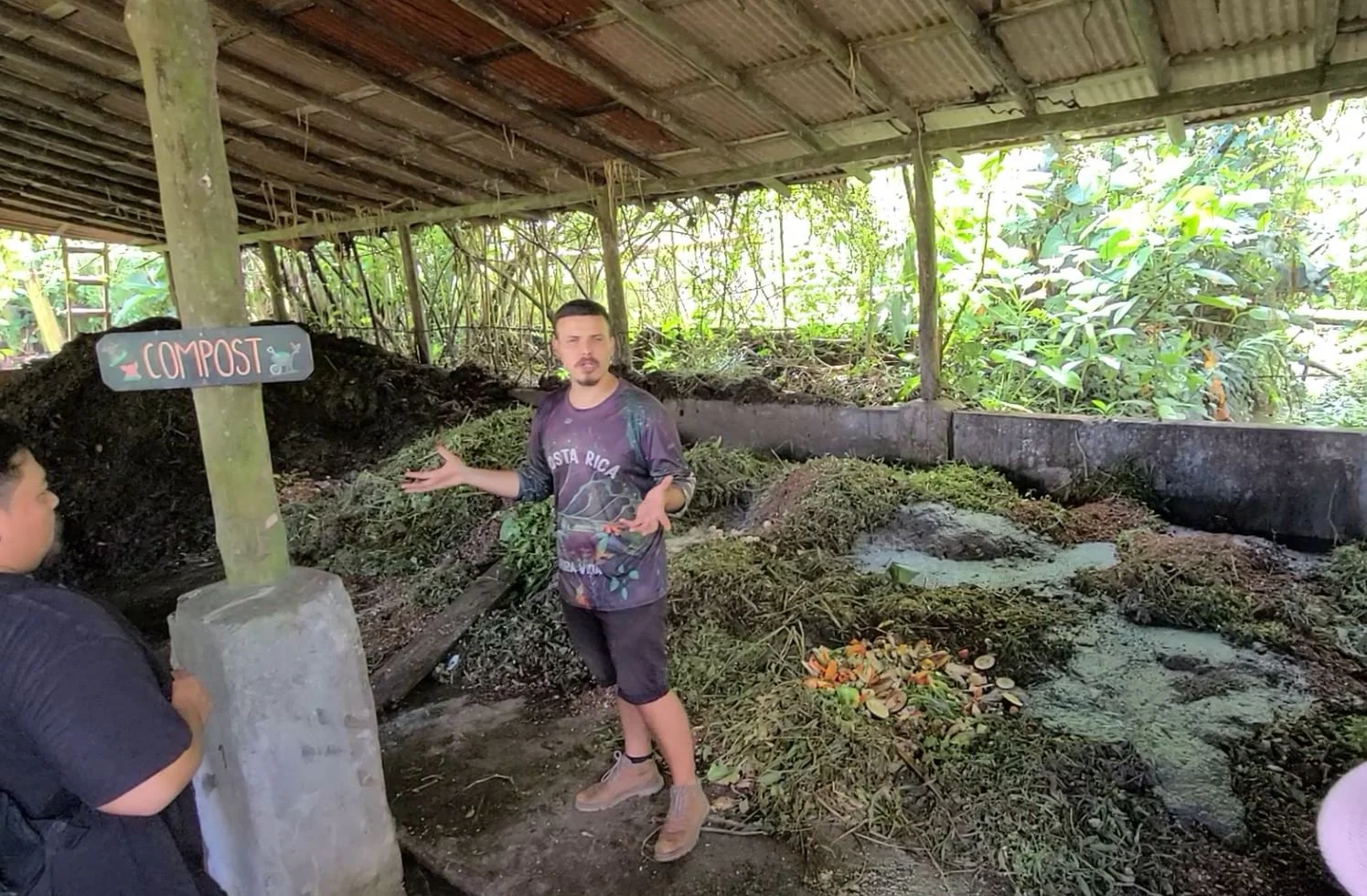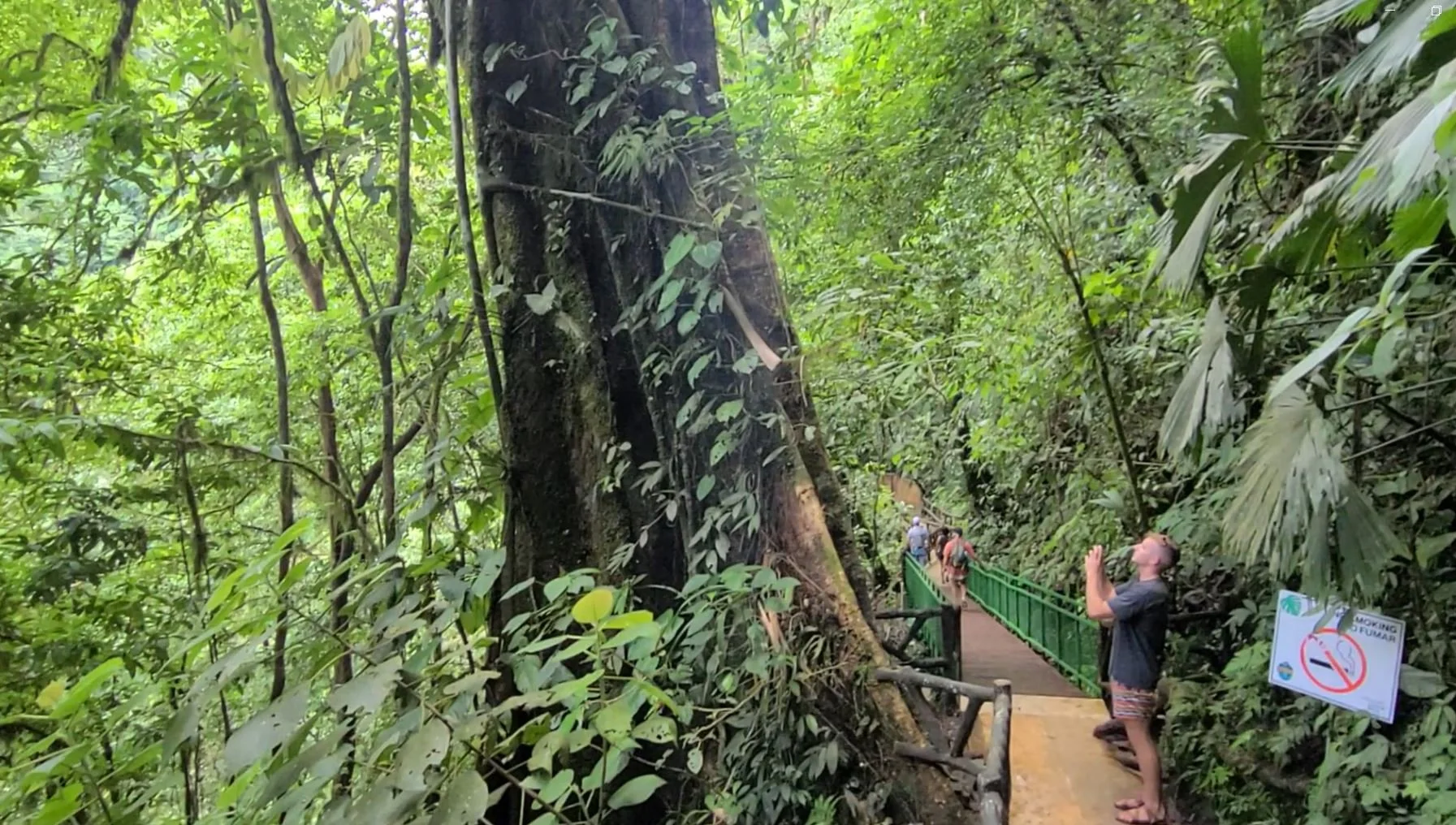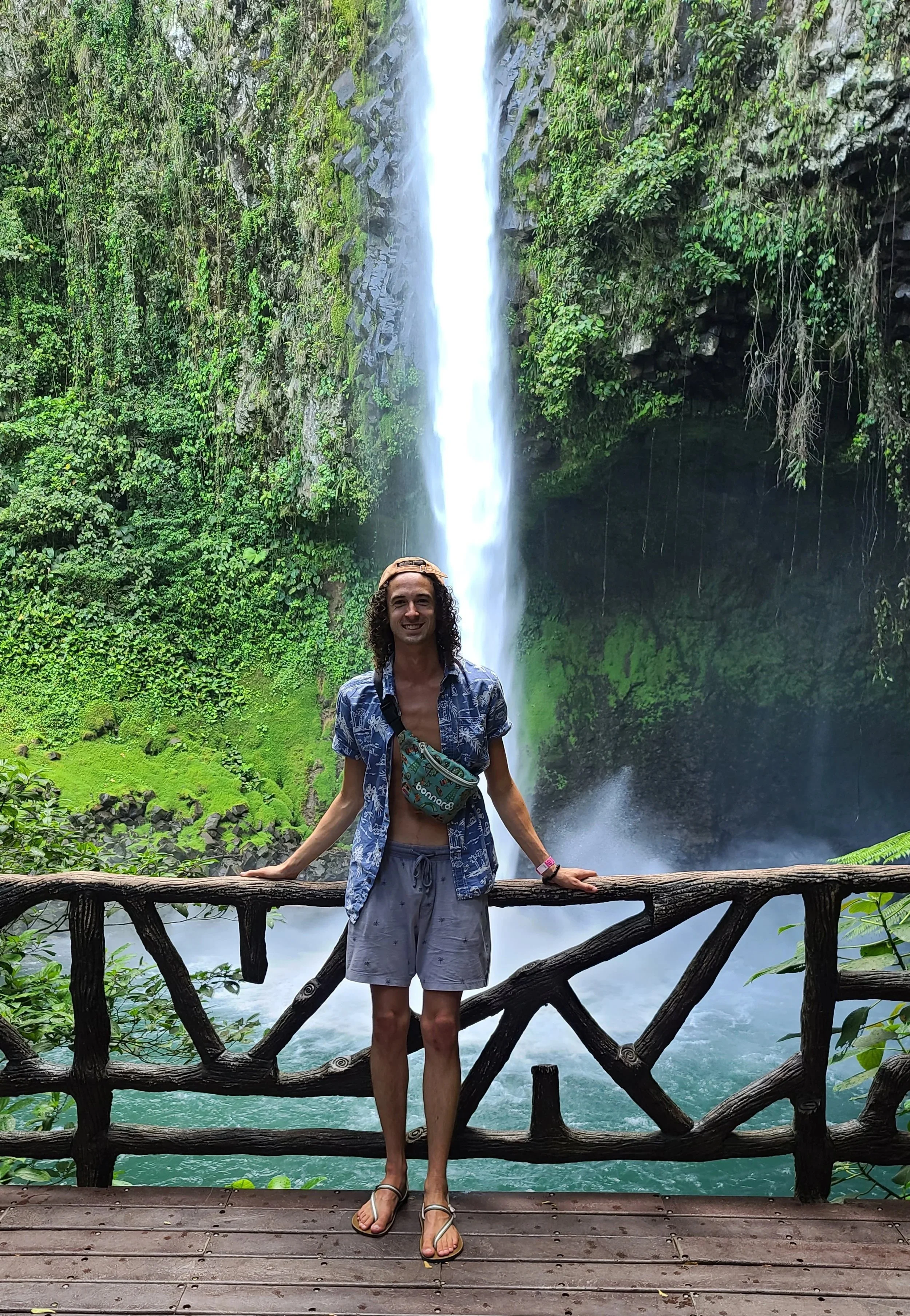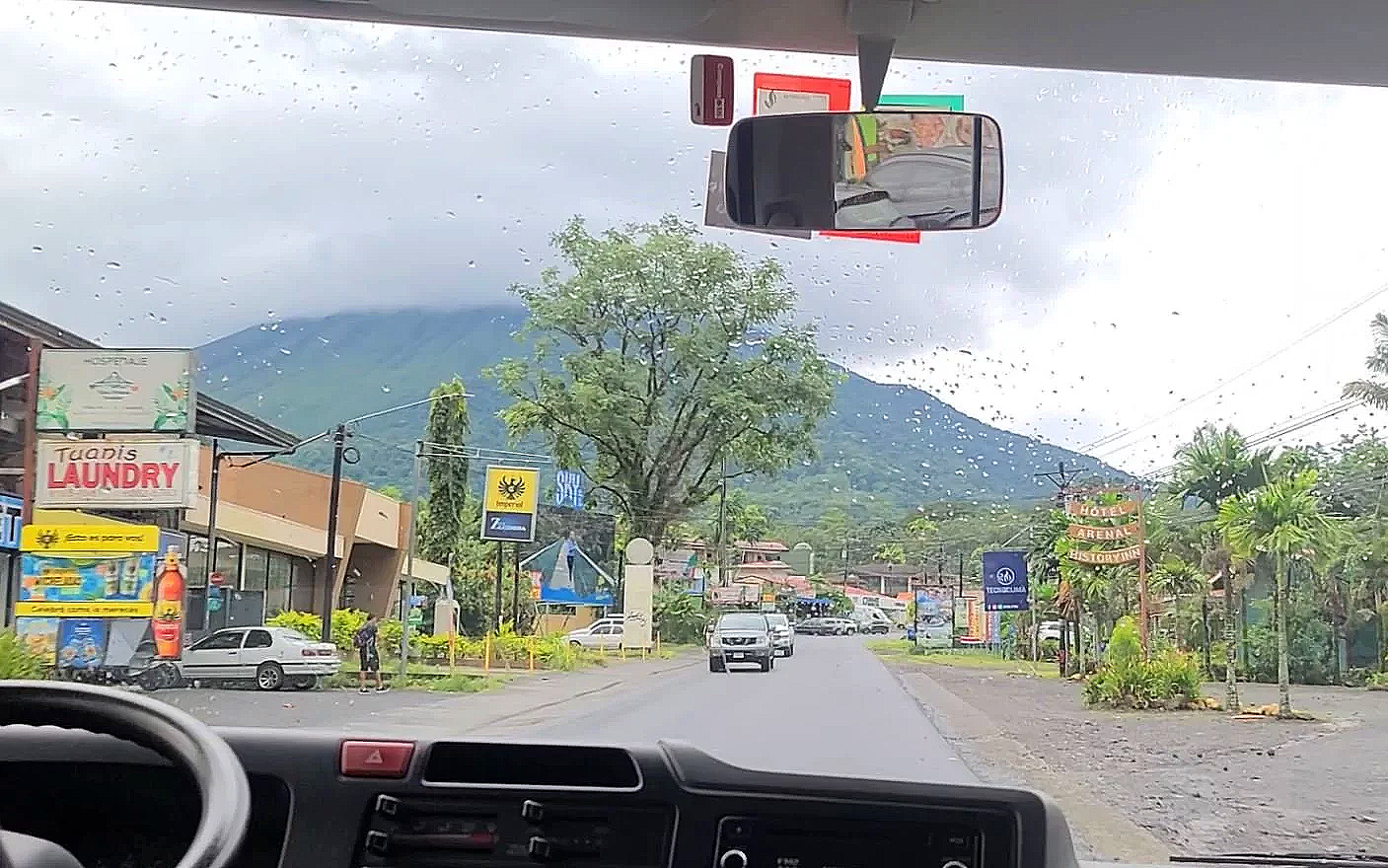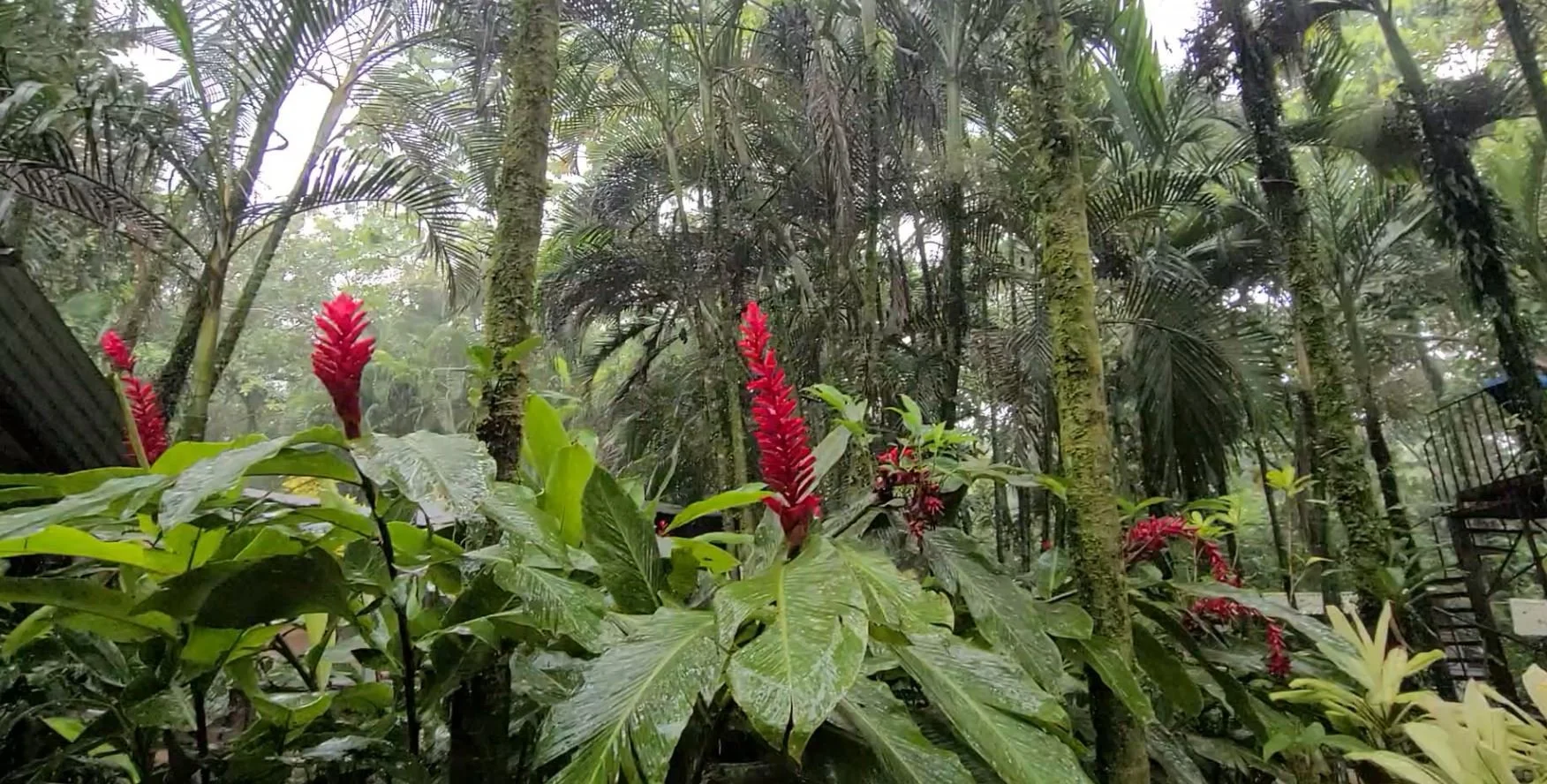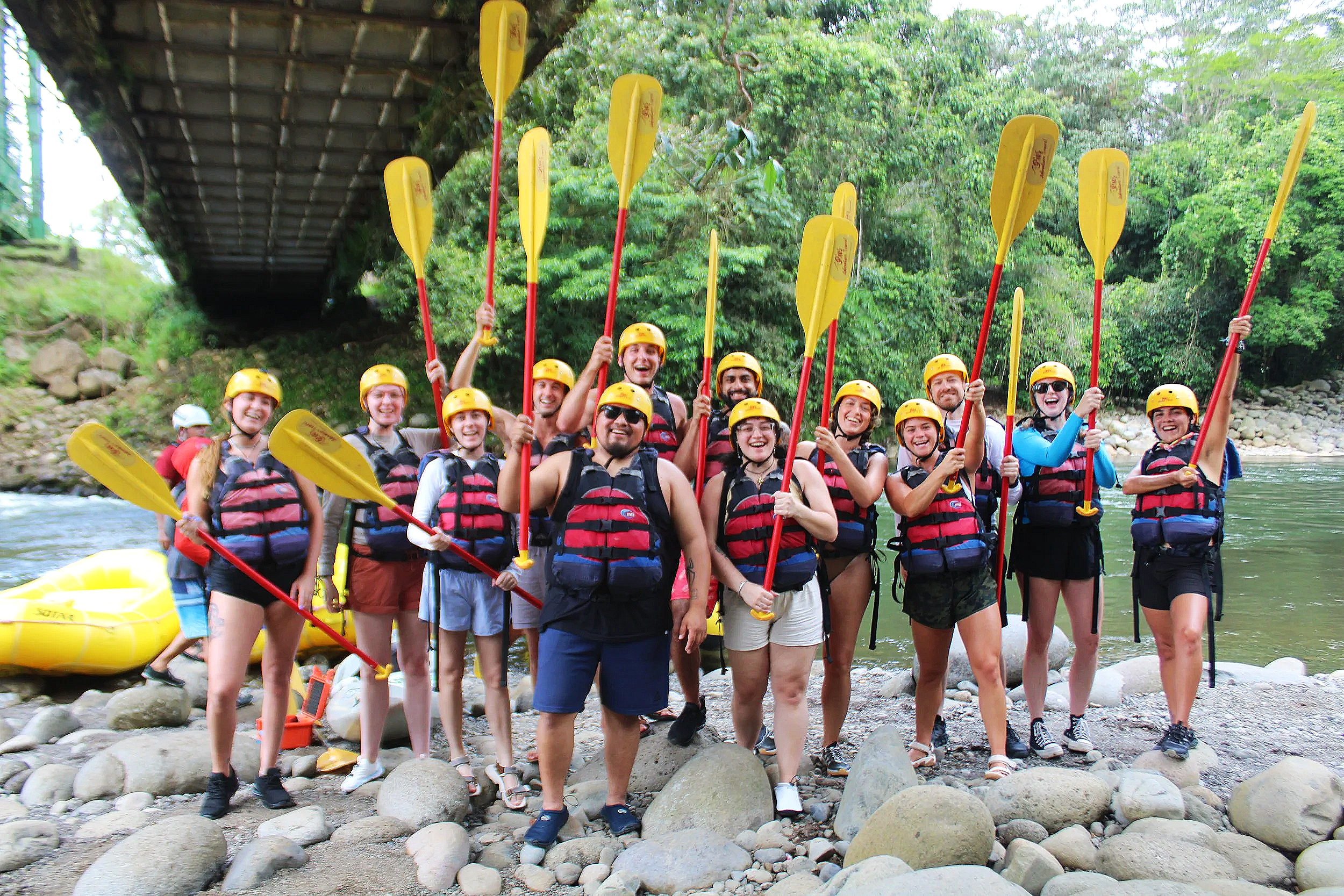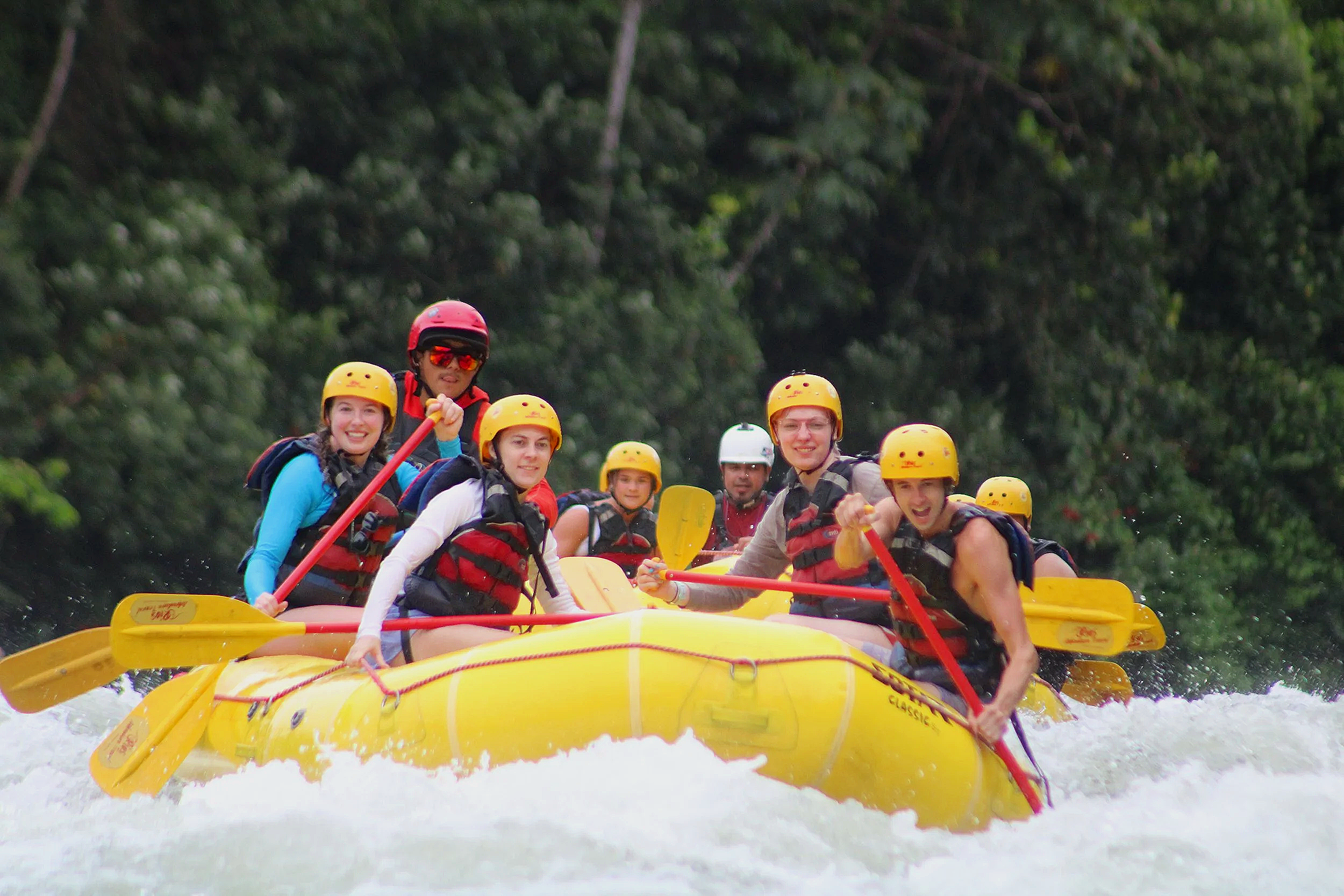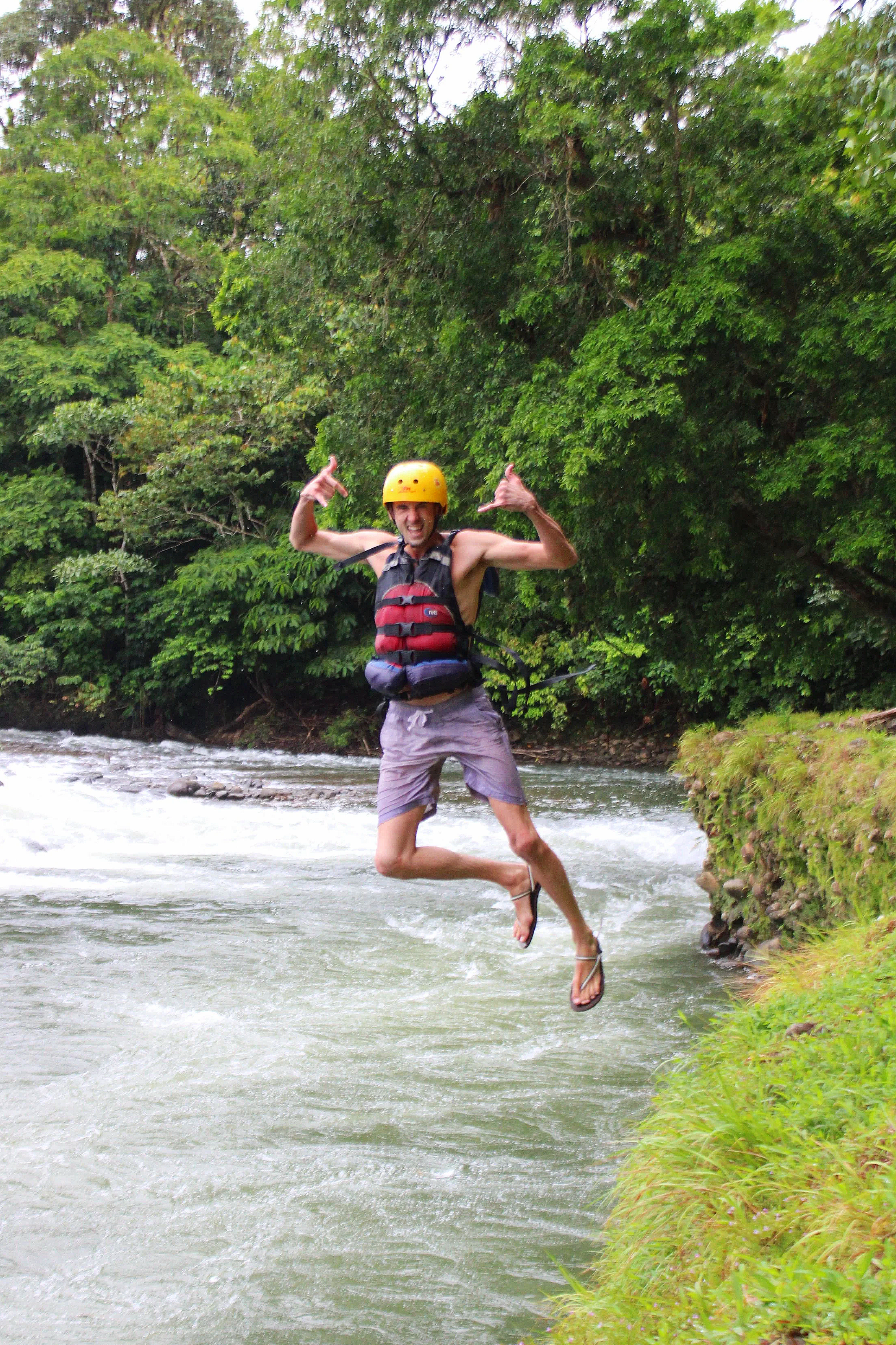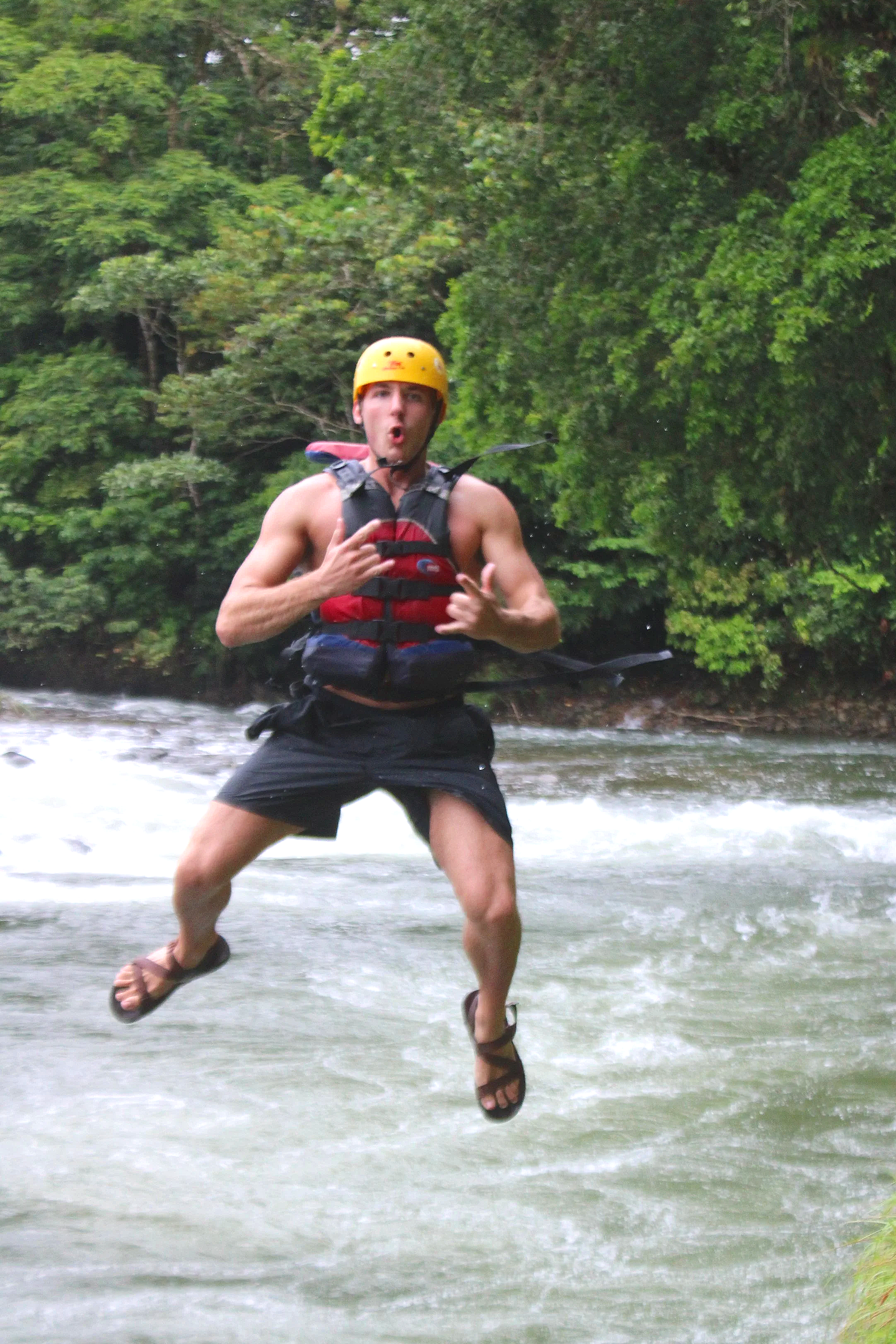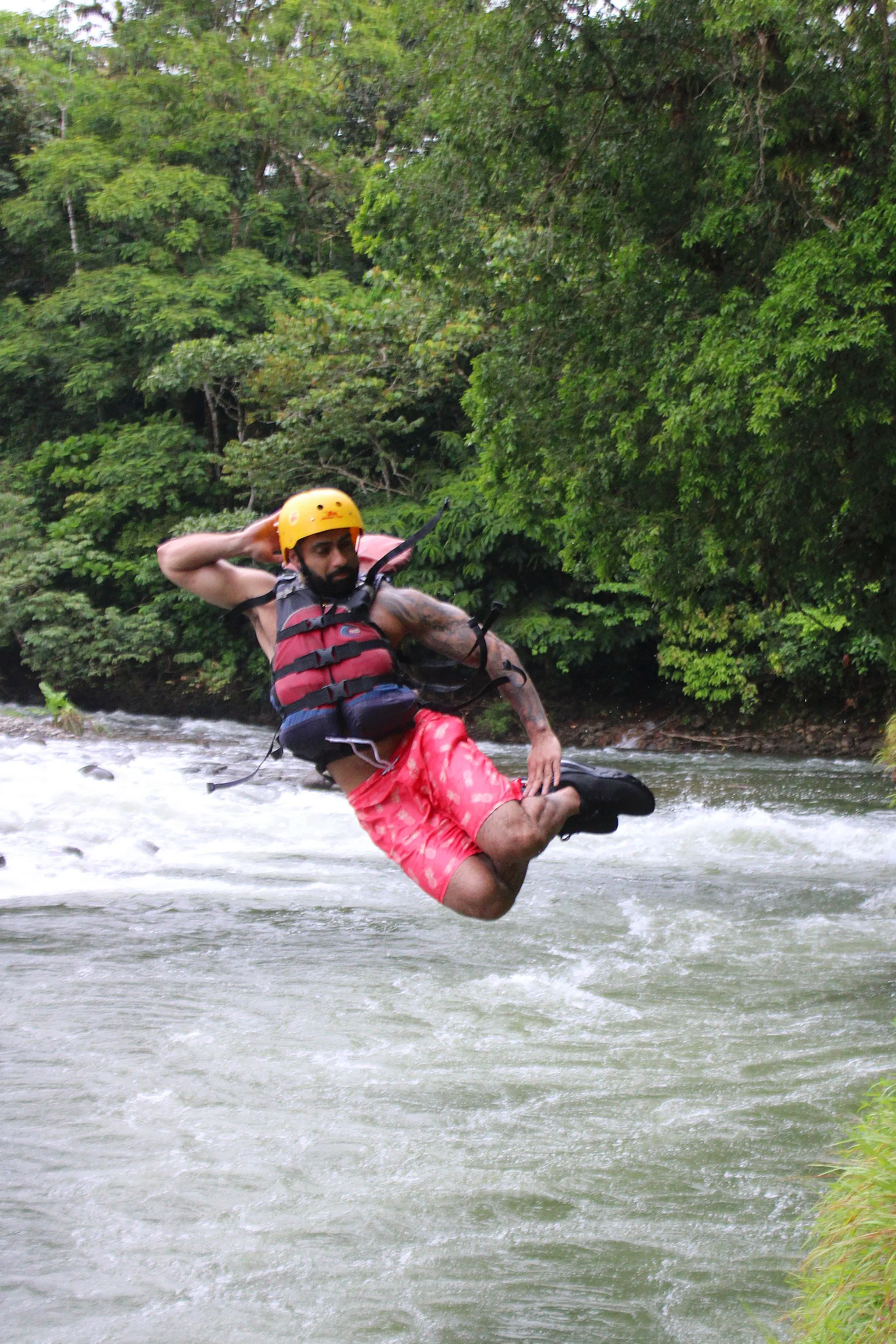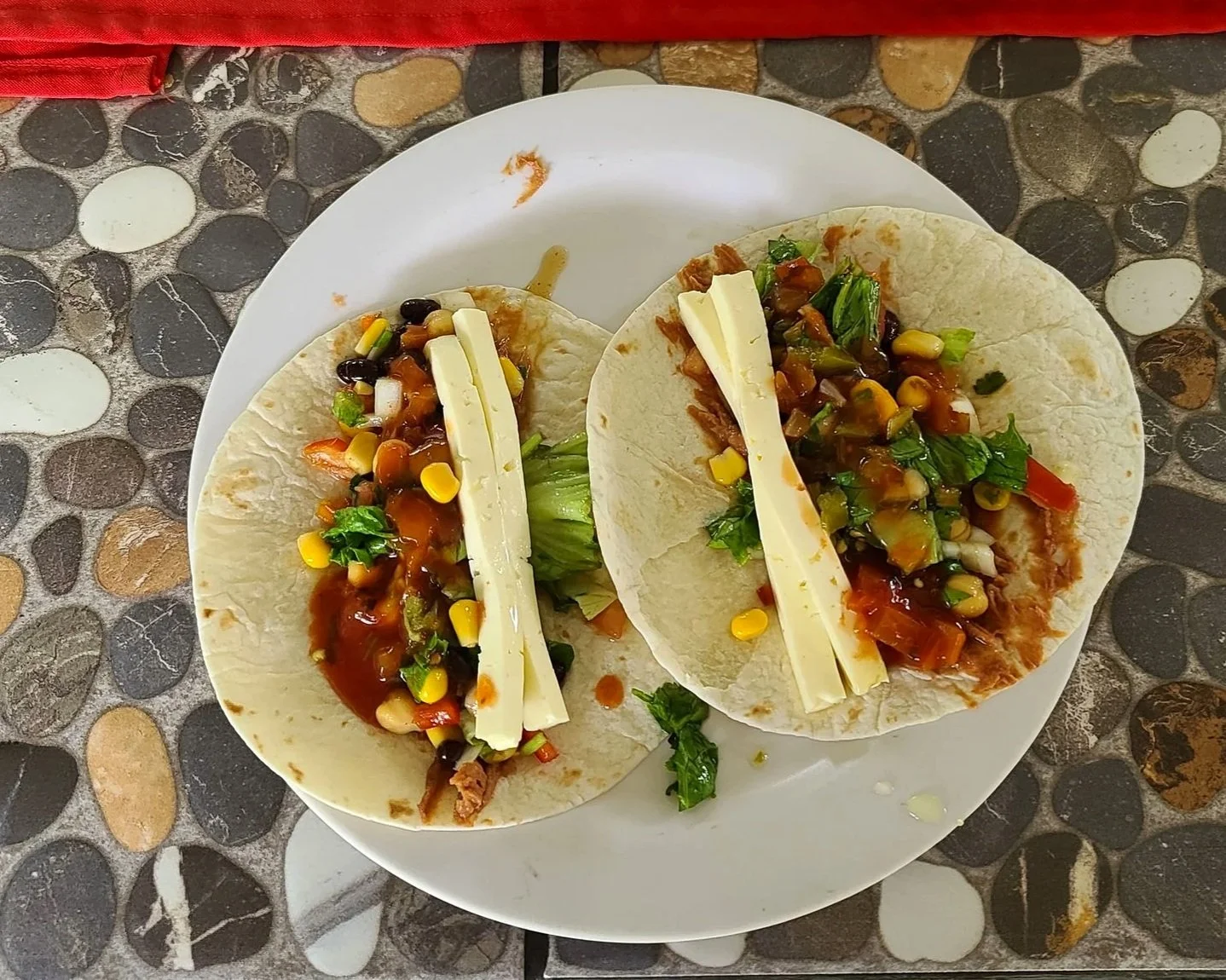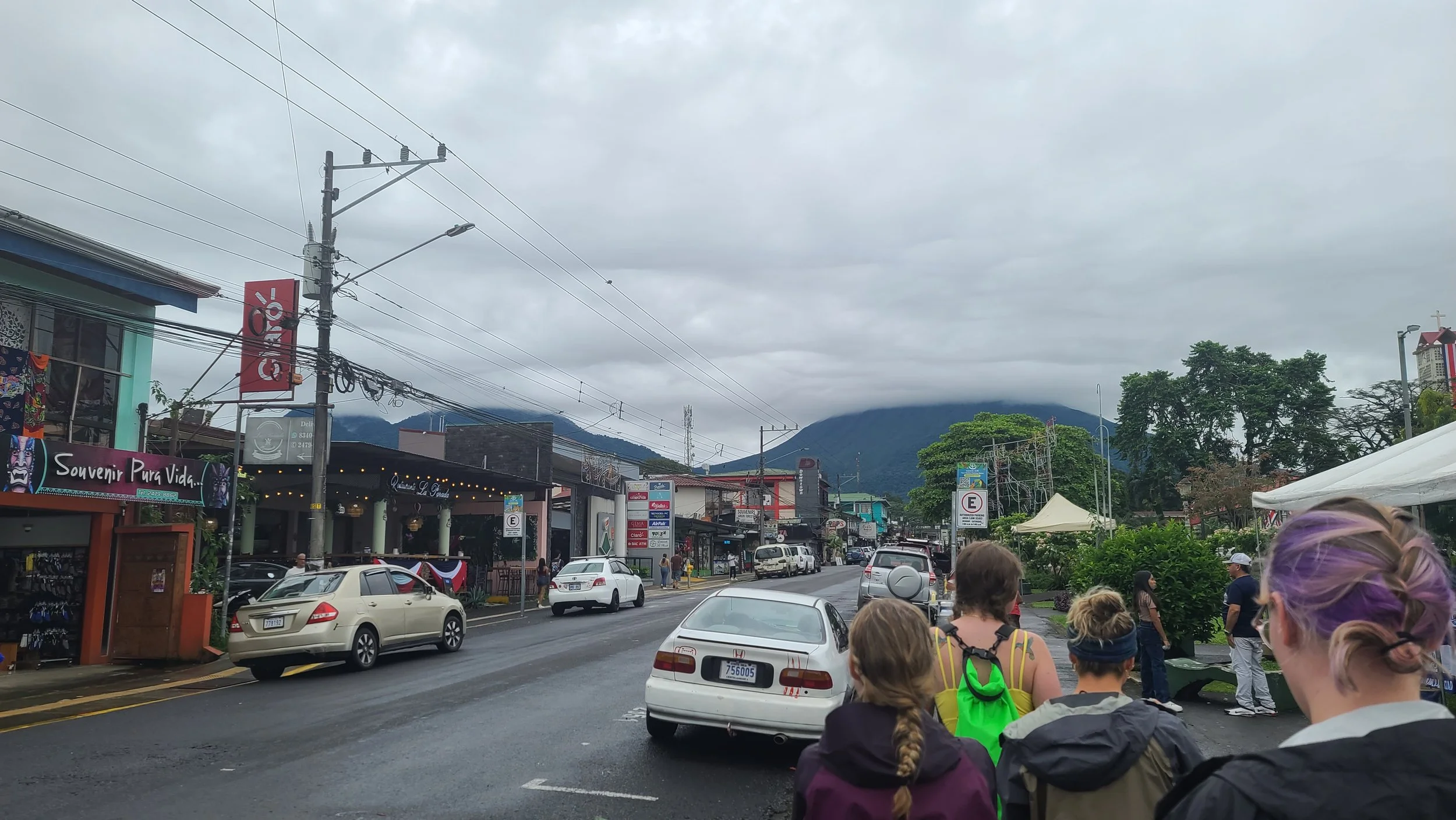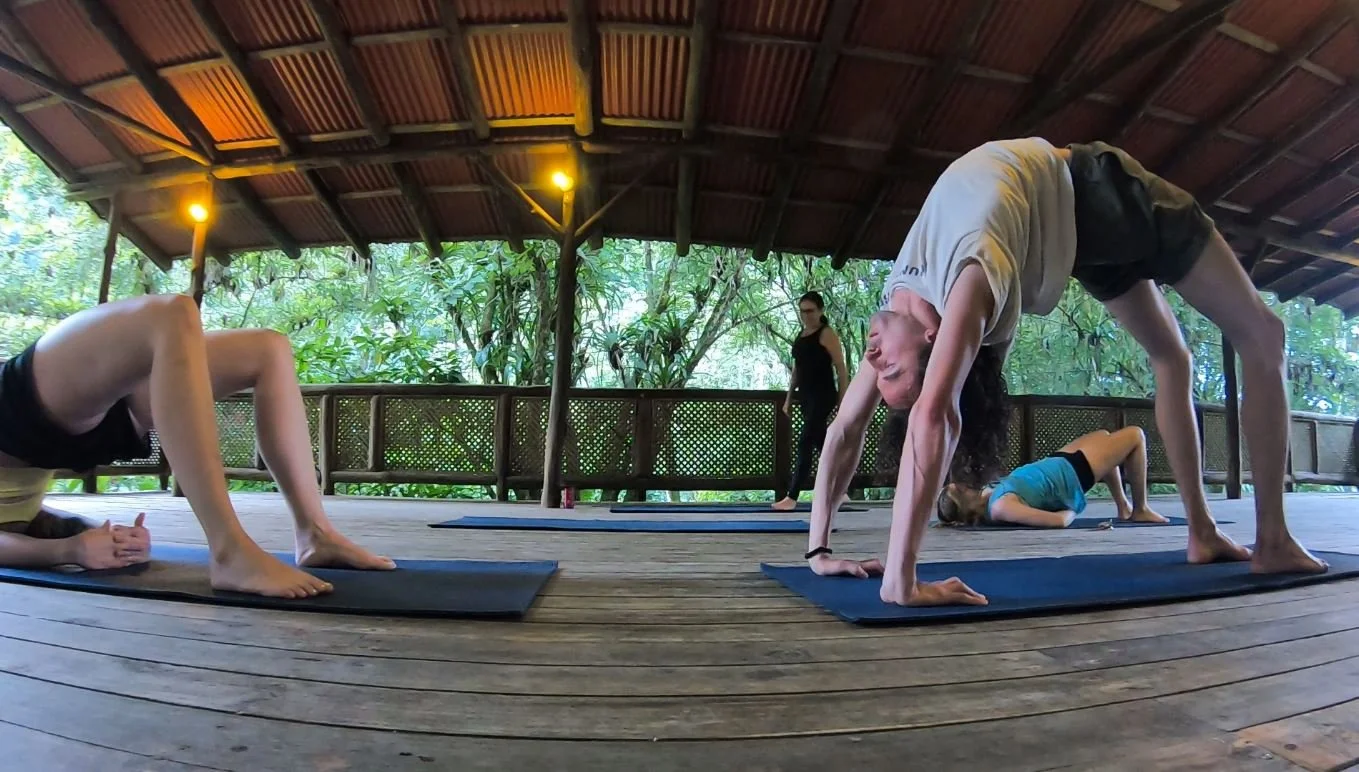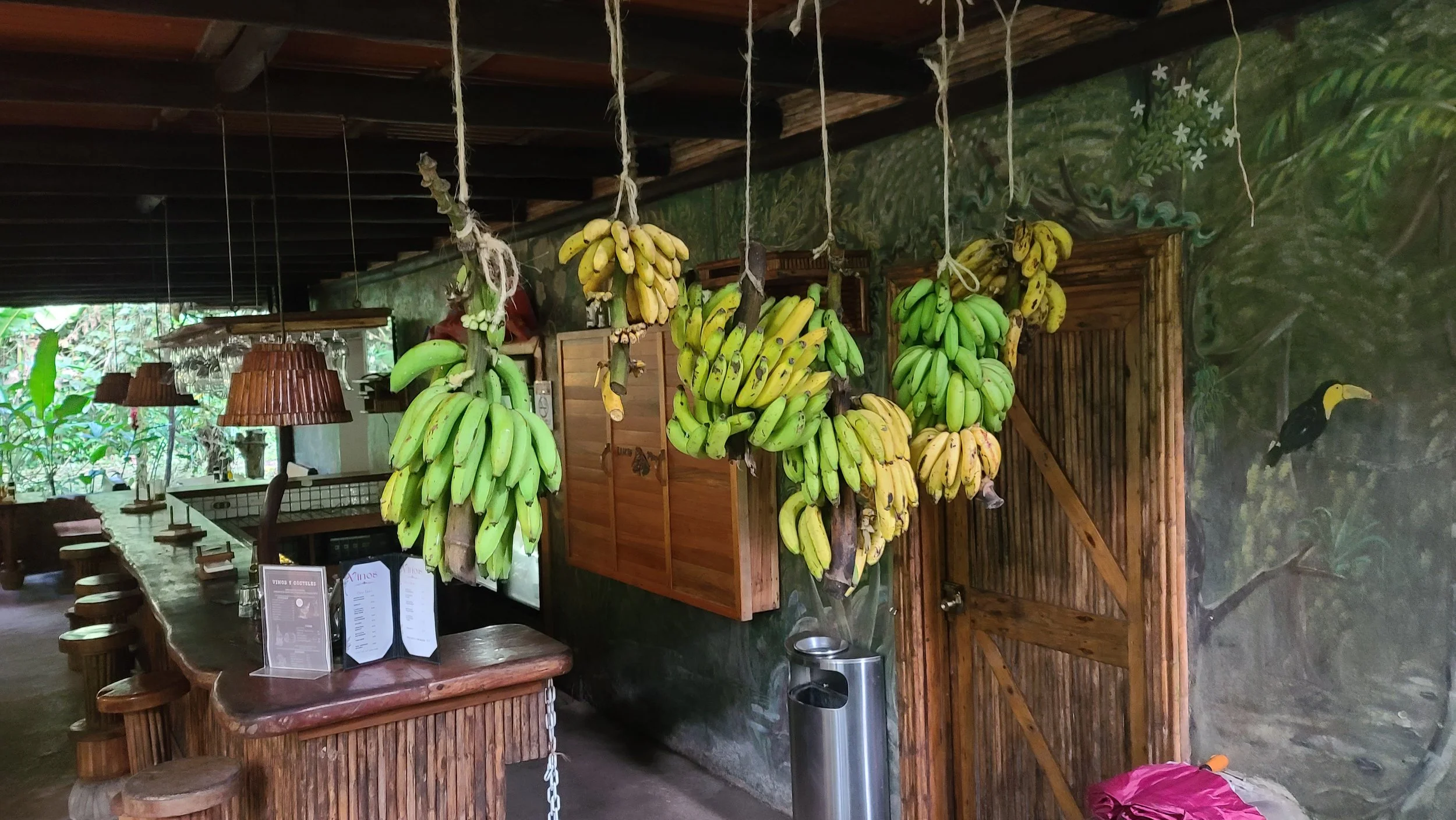I spent a week in the Jungle With Total Strangers — Part 1
Costa Rica is a tropical rainforest in the middle sliver of the Americas. The country is half the size of Pennsylvania, but over 20 times more ecologically diverse.
My parents and brother visited Costa Rica a few years ago and were blown away by its beauty. This summer I found myself with vacation time to spend and cash in the bank. I decided I need a first-hand experience of this Pura Vida.
It would’ve taken me hours of research and planning to figure out a trip by myself, so I book a trip through Under30Experiences, a travel company made for young travelers. Besides, I’m not opposed to meeting new people.
The trip was rapidly approaching, but it didn’t feel real until they emailed the itinerary. Just looking up the places we’d go and the things we’d do gave me the chills.
At 4am I hop in the uber headed for the airport with a single backpack. Instantly I get an adrenaline rush, “Do I have my passport? Did I bring enough money? Can I buy anything I might’ve forgotten?” With so much that could go wrong, I couldn’t afford any mistakes.
This will be my farthest and longest trip away from everything and everyone I know. But all I feel is excitement. As I step off the airplane in Costa Rica, I crack a huge grin and say, “I actually made it!”
Everyone meets up and we find our trip leader, Daya, a Costa Rican native (Tica) in her early thirties. Our dedicated bus driver Randall pulls up, we all say ¡Hola! and head to our first destination – La Fortuna.
Daya begins telling us about life in Costa Rica, but first she wants to make sure we’ll all stick together, so we count off one by one. I’m in the front, so I shout “¡Uno!” for everyone to hear. Zach calls out “¡Dos!” and the count goes all the way to “¡Doce!” (twelve).
There’s some talking on the bus, but mostly we sit in quiet contemplation. We’ve all been up since early this morning, and we’re at the 12-hour mark of traveling — with a five hour bus ride still to go.
About Costa Rica
Costa Rica doesn’t have spring, summer, fall, or winter. Instead it has a dry season (December – April) and a rainy season (May – November). It’s mid-September – peak rainy season – and it’s been raining since we got here.
Small farms dot the valleys and mountainsides, and we pass cattle grazing the lush green vegetation. Others grow ornamental plants for export, some I recognize from big department stores in the US.
I notice houses, restaurants, and sodas (convenience stores) have their doors and windows wide open- if they even have them! Many times I would just see holes cut out of the wall — a prime example of what it means to ground yourself.
Many roads are without a centerline, and most bridges only fit one car at a time. The cars and motorcycles are every age, shape, and condition you can imagine, and more than once I see people in their garage working on their vehicle with a buddy – a testament to their self-sufficiency. We also see people walking on the roads as traffic whizzes right past them. Some have umbrellas, but others nothing but a T-shirt and shorts. I soon realize getting wet is just a way of life here… at least in the rainy season.
It takes time for Randall to maneuver the stick-shift bus up, down and around the wet hills, and it reminds me of some roads I’ve traveled on my trips to West Virginia and Asheville, NC. Speed bumps slow you down going into and leaving town, emphasizing their “live slow” way of life.
Our first pit stop is a place called Tramo Los Angeles. The small store sells a wide range of products from Oreos, Lay’s chips, and soda to goat’s milk and homemade cheeses. Daya buys a sweet treat for us to try called cocada, made from sugar cane and coconut. I’m not a big sweets guy, but I can appreciate the clean ingredients from the native treat.
On The Road Again
With three hours left, I wonder what the same trip even just 100 years ago would’ve been like. Cars and planes barely even existed, and travel by ship was long and unpredictable, even dangerous. I’m grateful to travel thousands of miles to another part of the world, even if it does require an entire day dedicated to planes and buses.
In La Fortuna we stop at a Mega Súper grocery store to grab last-minute supplies and laugh at the name as we walk in.
Almost at our destination, Randall points out a huge mass towering over us- it’s the Arenal Volcano! Even in the dark we can see the perfect cone rising over 5,300 feet. Having learned about volcanoes but never seen one in person, it feels like a piece of my childhood is finally satisfied. Daya says most of the time it’s covered by clouds, and jokes it might be the best view we get the whole trip!
Our first few days will be spent at an organic farm called Rancho Margot. We’re dodging potholes on a back road for ten minutes before Daya laughs, “I promise we’re not lost!” Finally we arrive – just in time for dinner.
After dinner I pair up with Zach and we walk a winding path to Bungalow #10. He’s 24 and from Pennsylvania too, just the other side. It’s hard to see our new surroundings, but the clicks, chirps, and peeps all around paint the picture. Feeling a mix of excitement and exhaustion, we fall asleep with the window wide open, listening to the sounds of the jungle.
DAY 1
Since we’re so close to the equator, the days stay nearly half light and half dark year-round. The sun always rises between 5 and 6 am, and sets between 5 and 6 pm. This morning I wake up with the sun, and after lying in bed for a few minutes, I realize there’s no chance of me going back to sleep. I get up and start walking around to explore my new environment.
I can see my surroundings now – wow!
The jungle can’t be emphasized enough. Beautiful and intriguing flora and fauna surround me. Hummingbirds flutter from flower to flower. Birds dart back and forth over my head. I turn on my Merlin Bird ID app and record over 20 different species! The plant and animal diversity is unlike anywhere else I've ever been.
I’ve watched countless hours of “planet earth” documentaries, but nothing compares to first-hand experience.
At 7am, Zach and I arrive just in time for the Vinyasa yoga flow. The open-air yoga hut sits beside a melodious stream that flows into a small pool. The humidity soon turns it into hot yoga, and halfway through we shed our shirts before we start dripping sweat. Class ends just in time for breakfast, and on our walk back, Zach almost steps on a huge snapping turtle!
Year round Costa Rica has a great variety of fruit to choose from, and this morning I enjoy papaya, watermelon, and pineapple alongside French toast and fresh-squeezed fruit juice. Then I throw back some coffee just before we start the Rancho Margot tour.
Rancho Margot Organic Farm Tour
Our Rancho Margot guide Yackson welcomes us and gives us the lore; a Chilean man named Juan once helped expand Burger King throughout Europe, until suddenly, a heart attack forced him to slow down. He moved to Costa Rica in 2002, and two years later started the 420-acre farm, now home to around 50 workers, 900 chickens, 135 pigs, and a few cows.
Streams line the property and provide water for washing, drinking, and generating hydropower — allowing the farm to be off-grid and self-sustaining.
Yackson explains how the cacao plants are grown underneath tall banano (banana) trees to shade them from the harsh sun. This creates a symbiotic relationship called companion planting, found in almost every natural environment around the world. He contrasts this to monocrop farms (commonly found in the US), and describes how these farms need chemicals to successfully grow their crops. At Rancho Margot, chemicals have been banned since day one.
We head towards a barn with a “living roof,” meaning the rainforest just keeps growing, even on the tops of the buildings. But as long as the structure can support the weight, it’s not an issue- even better, it helps regulate the temperature, especially important on hot days. Once inside, we find the cows eating lunch.
Composting is an important part of life here, and next to the barn lie the compost piles. Here worms break down animal droppings and organic waste, and animal liquids become fertilizer for grazed, up-turned pastures. Composting is free, natural, sustainable, and heats the showers as well!
Tucked away on a mountainside in the middle of the jungle, this “ecolodge” seems to exist in its own world. As Yackson describes the seasonal workings of the farm, he pauses for a moment — he forgets what month we’re in! Sometimes I forget what day it is, but it must be a pleasure not to know the month!
Farther along, a small garden grows mint, squash, herbs and more. Because the volcanic soil is too acidic, they mix in their own compost to balance out the pH. Yackson shows us an incense plant, and I tell him I thought incense was just a word for scented stuff. He laughs and says, “Me too!”
We end the tour near the yoga hut, and when Zach mentions the snapping turtle from this morning, Yackson nods and says she lives in the nearby pool. Everything here coexists peacefully in this small slice of heaven, and it’s the perfect place to ground yourself.
It’s only noon, but to Zach and me it’s felt like an entire day has gone by already. With lunch finished, we’re ready to start our “second day.”
Arenal Volcano
Emerging from the jungle, we see Arenal Lake filled with jet skis and kayaks. We’ve had perfect weather so far, and with semi-clear skies, Arenal Volcano stands before us in (almost) its full glory!
What can I say other than, “It’s awesome!” The Arenal Volcano reveals itself to us, only the tippy top covered by a few clouds. Randall pulls over for us to take our first group picture.
Getting a great view of the volcano sets the tone for the whole trip — we experience even greater luck later.
La Fortuna Waterfall
After a short bus ride we arrive at the main event of the day — La Fortuna Waterfall.
Daya says La Fortuna waterfall is one of the best waterfalls in all of Costa Rica. Once we’re through the gates, it only takes a few steps to walk up to the amazing view.
Five hundred steps wind down to the bottom with several rest stops along the way. Halfway down, right beside the path, a huge tree catches my eye. Lately I've been fascinated with big trees, amazed at their magical ability to remain standing through decades, even centuries of human civilization. Maybe I hyped myself up seeing this one, but as I walk by and lay a hand on the tree, energy surges up my spine to the crown of my head. I remember how grateful I am to be here experiencing pura vida.
The raw power is immediately felt as water crashes 230 feet into a clear turquoise pool. It looks, feels, and sounds like a never-ending explosion. Mist fills the air and coats every surface with moisture. Mini waterfalls form on the surrounding rock faces, and leaves shimmer from 50ft away.
I take all the photos and videos I can, then climb over some big slippery rocks to get into the pool. I first try sitting on a rock in the water, but it’s basically a wave pool, so it’s not easy. I jump in and try swimming as close as I can to the plunge point, but the waves constantly push you away, and if you manage to get close, they start crashing over your head making it hard to breathe. I give up and continue admiring it from the rocky shore.
Around the corner, a quieter stream offers a “kid-friendly” spot, and a small school of fish glides right through our legs, unbothered by the dozen swimmers around them.
Just as Zach and I are about to hike the 500 steps back up to the top, without warning, it starts pouring. It’s coming down hard and fast, and my towel doesn't stand a chance. This unexpected experience leaves us awe-struck, and we stand there a few minutes longer (physically) soaking it all in.
Hot Springs
Back on the bus, with water-proof covers on the seats, I shout “¡Uno!” and Randall drives us to our next stop- the hot springs. Vámonos!
The locals enjoy free natural springs (a hike once parked off to the side of the road), but our hot water is included in our trip. We pull up to Termalitas del Arenal, and step into a luxurious atmosphere.
I feel relaxed before I even get in a tub! Palm trees stretch overhead alongside winding paths, and the pools range in size, temperature, and features. Colorful and varied vegetation promotes comfort and deep relaxation. In the back are small slides, with people of all ages and sizes going down backwards, superman style, freestyling, even spinning!
I hit both the slides then start looking for a hot tub to marinate in. Through the foliage I spot my friends in the 50°C (122°F) tub, the hottest one. I slowly wade in and it starts raining again, setting the perfect hot springs vibe.
With the scene set, we ask Daya about her life in Costa Rica. Tourism is a major industry here, especially in the La Fortuna area. Her passion for tourism sparked when she came here on a high school trip and saw her fellow Ticos leading tourists. She mentions that some people, called “lifers,” travel to Costa Rica to see their favorite animals found nowhere else in the world. She then recalls a heartwarming story of one woman who traveled here to see “her bird” for her 75th birthday!
Daya's worked with different tourist agencies for 10 years now, some including young kids and high schoolers. She mentions those ones as particularly tough, since she’s 100% responsible for the kids the entire time. But I'm sure adults are hardly any better!
Late-Night Karaoke
As dinner wraps up back at the farm, one of the staff asks if we're interested in karaoke tonight. Sensing his anticipation, we all say “¡Sí!” and not soon after, he busts out the speaker, microphone, and laptop. It’s slow going at first, but after a few songs (and a few mojitos) we loosen up.
It’s been an incredible day – a dream, really. As I drift off to sleep, I can’t help but wonder if the days ahead could possibly top my first day in Costa Rica.
DAY 2
I wake up at sunrise again and enjoy a mostly-fruit breakfast – the freshness and variety here is unbeatable. This morning we seek discomfort as we head to the day’s main event.
Pineapples and Parades
On the ride over, Daya tells us we’re entering “pineapple land” – the only issue is that these pineapples are monocropped. As described before, this wipes out forests and destroys delicate, diverse ecosystems. One pineapple plant only produces one pineapple every year, and when the fruits are harvested, the whole field is burned to make way for the next round. The chemicals needed to grow these pineapples are banned from farms in the US, but there’s no issue with importing them.
Although it’s unfortunate – pineapples being one of Costa Rica’s major exports – it’s important to draw awareness to these topics so we can choose to consume healthily, consciously, and sustainably.
A few minutes away still, at La Virgen, we’re stopped in the middle of the road. Today is September 15 – Central America's Independence Day. In 1821, Costa Rica, Nicaragua, Honduras, El Salvador, and Guatemala all declared their freedom from Spain. The festival is marching through town, and people of all ages in all kinds of costumes are celebrating the special day.
Whitewater Rafting
Today, we’re going whitewater rafting. We park alongside the Río Sarapiquí, strap on life vests and helmets, and grab paddles. The rafting guides give us the rundown, then divide our group between the three rafts. It's many people’s first time, so we go down Class III rapids.
The views are awesome, and thinking about it more, almost any whitewater rafting trip has cool views. I notice that with optimal growing conditions year-round, some 50 year-old trees here are taller than 150 year-old trees in Pennsylvania. We spy tiger herons and other birds on the shoreline, but the real treat is an iguana perched on a dead tree reaching out over the water.
A few times we jump out of the raft and climb up the riverbank, just to jump back in from a few feet higher. The rapids are easy overall, but José makes it fun - we spin down several rapids, and on the last one, we go down backwards!
Back on shore we change into dry clothes as the guides prepare us fresh fruit and tacos. I don’t know what all the ingredients are, but they’re tasty, super fresh, and full of flavor. Not to sound dramatic, but I could taste the light energy in the food – it was that good.
José and the other guides are super friendly and clearly love their work. I’d recommend them anytime and you can check them out here.
Energy, Ice Cream, and Yoga
At this point I become aware that, so far, every minute I’ve spent in Costa Rica has been charged with energy. Granted, I’ve only been here a short while – or maybe this is what it’s like living here – but I’m feeling great and capitalizing on my unique experiences.
I don't make money from my adventures (yet), but that's okay. From my experience, it’s who you become in the process that matters more than the end result. As I write this blurb on the bus ride back, I notice the time – 2:22 pm. I take it as a sign for me to continue traveling and sharing my first-hand experiences and insights. To support what I’m building, check out my all-natural (almost) edible health products at gagesnatural.com.
In downtown La Fortuna, we treat ourselves to some ice cream and browse the souvenir shops. When prices are listed in dollars, and not colones, you know you’re paying tourist rates.
We get back to Rancho Margot at 4:30 pm, just in time for evening yoga. This time it’s me, Grace, Isabelle, and our instructor, Fátima. Fátima spots shallow breathing immediately as we enter the space – I know she’ll be a good instructor.
First we stretch our spines forward and backward, then side to side, then do some twists. After a few isometric poses, we end with silent meditation, listening to the sounds of the jungle. Despite the mosquitoes biting my legs, I talk with Fátima after class about her style of yoga, the DeRose Method (SwáSthya Yoga).
Up until now, we’ve had the farm all to ourselves. But now, a senior high school class from the US has just arrived. After dinner we grab a couple of Imperials – Costa Rica’s most popular beer – and head to bungalow 15 to hang out on the porch. We swap stories about our past and what brought us here, trading laughs and lore about everyone who came together for this trip.
DAY 3
Zach and I wake up with the sun again, grabbing a couple bananos on our way down to 7 am yoga. At first it’s just us and Fátima, but after a few minutes of deep breathing, the class quickly fills up as 25 more people join us.
Today we pack up for Monteverde – the Green Mountain. Locals say it's quicker to hike there than drive, but this isn't that kind of trip! After breakfast we gather our bags, thank our hosts at Rancho Margot for their hospitality, and begin the three-hour ride toward our next adventure – Monteverde.
As the bus winds through the mountains, mist creeps across the valleys and I can already sense why they call it the Cloud Forest.




